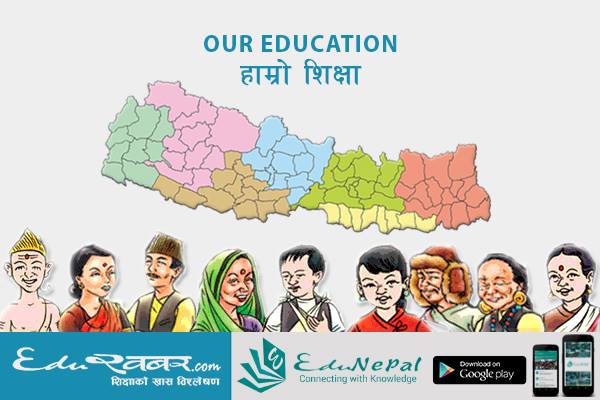
A just society and prosperous country envisaged by us is not possible without ensuring reforms in community education. Whether we accept or not, education is playing a major role in the current class stratification of the society. Many of us have seen the class division at display due to our existing educational system. But we may have not been able to examine the class divisions prevailing inside the community schools.
The most visible division within the community school is depicted in the learning capabilities of the students. There is a difference of 70 to 80 percent between the learning achievements of community schools located in urban areas compared to the ones in rural villages. This shows that the inequality among community schools in rural and urban areas is widening. Similar types of discrimination are visible in even 'good' schools located at rural villages and city areas. In recent areas, parents are attracted in providing education to their kids in English medium. Some community schools have started imparting education in English out of compulsion while others have initiated so out of their will. Among such schools, 90 percent are imparting education both in Nepali and English medium.
Community schools that provide education in English medium have arranged special teachers to take up the responsibility. They have charged some kind of fees from parents. Their examination system, teaching methodology, textbooks are similar to private schools. In other words, the land and belonging to the school are of the government but the nature of the educational activity is entirely different. But side by side, they also impart education in Nepali medium. The classes in Nepali medium are run in a fashion similar with that of other community schools. The English medium classes are similar to that of private schools. This has created two communities—one that can afford fee and one that cannot afford fees—while implementing two different education systems. The two systems have also created gaps in the level of learning as well as results. The community schools are creating inequality and class discrimination.
The constitution of Nepal commits that it is the responsibility of the state to ensure free and compulsory education for all of its citizens. But its implementation is a serious challenge. Our political parties are not concerned about the matter. The manifestos of the political parties are far above the reality and there are serious doubts over their implementation. Parties keep on making lip service for quality education but they are unclear about what constitutes such an education. If we look at the level of learning, the situation of community education is on the brink of a catastrophe. It is unfortunate that kids who have completed three years of foundation education and are enrolled in grade four are not able to read textbooks properly and solve basic addition and subtractions of mathematics. The GPA obtained by the students of the community schools in the SEE examination show their level of learning.
Under the changed set up, the pass percentage in the annual examinations of grade 12 apart from the science stream is 42.33 percent. This provides evidence to the argument that claims not much improvement in learning over the years. The results of the SLC examination for the last 80 years has also shown that the poor quality of education at community schools. The figures from the national learning achievement programme have also presented problems in the existing learning methods in community schools. An annual report published recently by the World Bank entitled 'Learning Crisis' has claimed that this has been a worldwide phenomenon.
There are huge gaps in the learning achievements of students. Such gaps are mainly in subjects like Mathematics, Nepali and Science and it is increasing as students advance in classes. The education system is same, textbooks and curriculum are same, but the gap between the learning achievements in students is sure to adversely affect our dreams of creating a just and equal society and a prosperous country. The inequality in learning also exists in community and private schools. Such inequalities create class division and contribute to escalation of conflict in society.
Government, ruling and opposition parties, not a single of them, are serious about reducing such inequalities. No policy initiatives are under discussion neither is the plan to mobilise state machinery towards reducing the gap. Parties have used terminologies that imply that they will make an attempt to improve quality of public education. Such language shows how much priority they have accorded to those issues in real. There is no evidence that suggest that the government and political parties have made serious effort to improve the quality of community education in the past. So, we can expect very little from them in future. The parties which claim themselves as alternative forces have also not been able to present a clear roadmap. We must also seriously evaluate the capability of our bureaucracy and try to ascertain whether they are capable enough to carry out the much needed reforms. One of the major pillars of the reforms are teachers but they are focused more on national and partisan politics.
These contexts present a very bleak picture about the possibility of improvement in community education in Nepal in near future. Despite that, the recently elected local bodies who are more connected with public at the ground level can conduct regular monitoring on the learning achievements in schools and make teachers accountable for results of their schools. They can also ask parents to pay greater attention in the education of their kids and motivate students to learning. There are reasons to be optimistic if we look into some of the steps taken by some local governments at their initial stages. The political parties at the centre should facilitate such endeavors by formulate laws and policies. They should also be honest to ensure sufficient funds so that the goal of disseminating education free of cost, also enshrined in the constitution, can be implemented without any hurdle.
प्रतिक्रिया